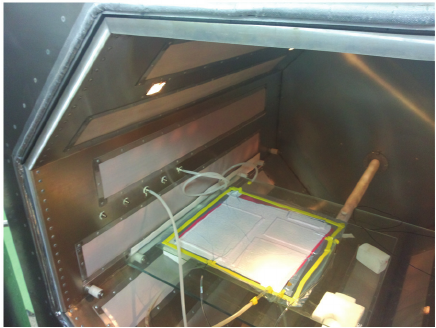The principle of rubber vulcanization and the advantages of microwave curing oven. Raw rubber becomes soft when heated, becomes hard and brittle when it is cold, is not easy to form, is easy to wear, and is easily soluble in organic solvents such as gasoline. Easy to age. In order to improve the performance of rubber products, a series of processing processes are performed on the raw rubber during production. Under a set of conditions, the raw rubber in the rubber and the vulcanizing agent are chemically reacted to form a linear structure. The molecular cross-linking becomes a macromolecule with a three-dimensional network structure, so that the rubber material has excellent properties such as high strength, high elasticity, high wear resistance, and corrosion resistance. This process is called rubber vulcanization.
The vulcanization process is generally divided into four stages, inducing a pre-sulfurization, a normal sulfurization, and a persulfurization. In order to achieve this reaction, energy must be added to reach a certain vulcanization temperature, and then the rubber is kept at the vulcanization temperature range to complete the entire vulcanization reaction. Various methods can be used for rubber vulcanization. The traditional method is to use a vulcanization process such as steam or far infrared heating. However, because the heating temperature is slowly heat conduction from the outside to the inside of the medium, because the rubber material is a poorly conductive material, for rubber, heating depends on the surface of the material and the heat transfer rate is very slow. Most of the time is spent on letting the rubber Reached the vulcanization temperature.
Principles And Advantages Of Microwave Curing Oven Technology


